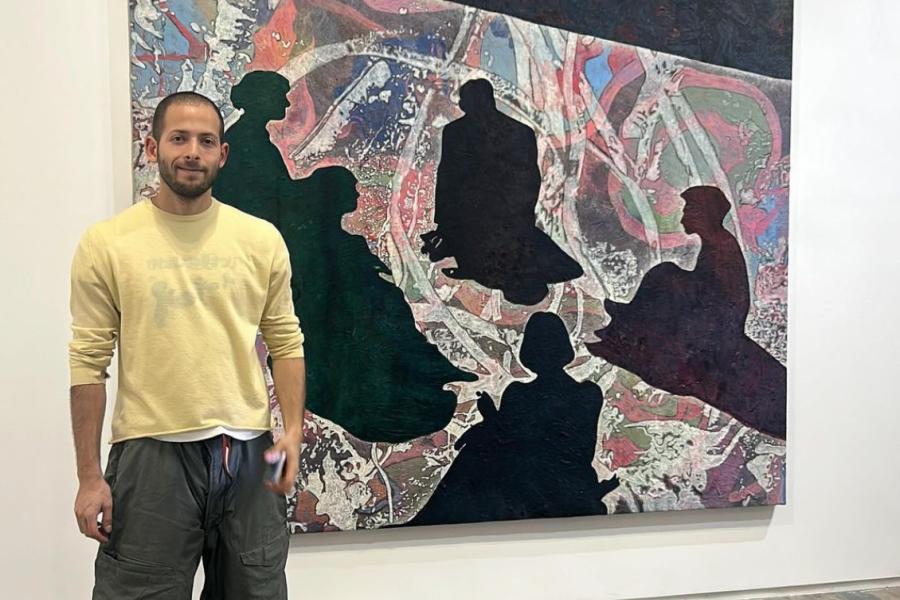Amanita is pleased to present Apples & Oranges, a solo exhibition by Adrian Schachter.This is Adrian’s second solo show with Amanita.
The opening reception will be held on Friday, March 15 from 6 to 8 PM at 313 Bowery, New York. We look forward to seeing you there.
Bugs Bunny once said, “Comparing me to a regular rabbit is like comparing a carrot to a cactus. Sure, they're both plants, but only one's worth the chase." Analogizing is in our nature. Here is another one: arbitrary as it may seem, if an AI entity is a person, I would call the soul the model and its environment might be the data set it’s trained on… This is to suggest that we interpret the world around us by means of our internal code. External influences, sure, but we have varying degrees of autonomy in collecting our own data points. I may not be alone in thinking my model could do with an update, my results might spin out. You send a stone skipping across a pond and it ends up in the ocean.
Random forests in AI is an ‘ensemble learning’ algorithm designed to ask for the individual opinions of various ‘decision trees,’ (branching models for decision-making) which are then combined to come up with the most robust answer. Well, seeing the same tree twice in a forest means you’re lost. Here you will see me running away from the trees that I just saw… looking for loopholes where a tree might splinter and become host to a variety of other plants.
This is my browser, but challenged into real life on frictive surfaces. Sigmar Polke said “history is my material, I use it the same way that I use clay.” These are found lumps of clay... I am staging them a certain way alongside certain actors (other lumps)… I’m not telling a story; I’m sharing a collection of observations and expressions that may be disparate fruits, but were picked from the same tree.
— Adrian Schachter
Adrian Schachter (born 1996, NYC) is a contemporary visual artist based in NYC. He holds a BFA with honors from the School of Visual Arts (SVA), New York, NY. Adrian researches mythology, obscure phenomena, and anomalies to challenge the notion of absolute truth beyond the boundaries of conventional reality. He is particularly interested in the Medieval era, when religious and esoteric beliefs overshadowed the influence of science. For over two years, Schachter has employed Artificial Intelligence (AI) tools, deepening his exploration of unconventionally gathering and understanding information. While embracing new technologies, Schachter upholds the integrity of his craft by referencing and drawing inspiration from history.
 Adrian Schachter Apples & Oranges - Mit freundlicher Genehmigung von: spazioamanita.com
Adrian Schachter Apples & Oranges - Mit freundlicher Genehmigung von: spazioamanita.com Adrian Schachter Apples & Oranges - Mit freundlicher Genehmigung von: spazioamanita.com
Adrian Schachter Apples & Oranges - Mit freundlicher Genehmigung von: spazioamanita.com